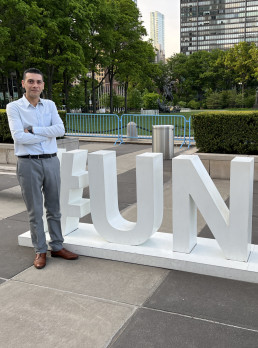Negotiation Unveiled: Mastering the Zone of Possible Agreement (ZOPA)
Welcome back to our exploration of negotiation mastery through the lens of the Zone of Possible Agreement (ZOPA). I’m Ramy Ayoub, and in this installment, we’re embarking on a global journey to navigate the intricate dance between cultural nuances and negotiation dynamics. Just as a traveler immerses in new cultures, you too can immerse yourself in the world of cultural sensitivity to enhance collaboration within the ZOPA.
The Global Lens of Negotiation
Negotiations today often transcend borders, cultures, and languages. As the world becomes more interconnected, the ability to navigate cultural nuances is becoming increasingly essential in negotiation. Understanding and respecting cultural differences can transform potential barriers into bridges of understanding within the ZOPA.
Cultural Nuances: Language Beyond Words
Cultural nuances extend far beyond spoken language. They encompass non-verbal communication, body language, values, norms, and social expectations. Ignoring these subtleties can lead to misunderstandings that narrow the ZOPA.
Imagine negotiating a partnership deal with a business in a foreign country. While the words might suggest agreement, misinterpreting a lack of direct eye contact as disinterest could hinder progress. By understanding cultural communication norms, you can establish rapport and widen the ZOPA.
The Cultural Dimensions of Negotiation
Cultural dimensions, as studied by scholars like Geert Hofstede, offer insights into negotiation approaches based on cultural values. Individualism vs. collectivism, high vs. low power distance, and other dimensions shape negotiation preferences. Recognizing these dimensions can guide your approach to create harmony within the ZOPA.
Suppose you’re negotiating a joint venture in a collectivist culture. Emphasizing teamwork, shared goals, and community benefits align with cultural values, widening the ZOPA by appealing to shared interests.
Harmony in Diversity: The Multicultural ZOPA
In multicultural negotiations, embracing diversity becomes an asset. Rather than viewing cultural differences as obstacles, see them as opportunities to explore innovative solutions within the ZOPA. Multicultural negotiations often lead to outcomes that are more robust, inclusive, and sustainable.
Imagine negotiating a partnership involving stakeholders from different countries. By fostering an environment where diverse perspectives are valued, you’re enriching the negotiation process. Different viewpoints can lead to novel solutions that expand the ZOPA beyond what a monocultural approach might achieve.
Adapting and Bridge-Building
Adaptation is the key to successful negotiations across cultures. A one-size-fits-all approach won’t suffice. Adapting your negotiation style, communication, and even the timing of negotiations demonstrates respect and enhances the ZOPA.
Suppose you’re negotiating with a supplier from a high-context culture that values relationship-building. Taking time to build a personal connection before diving into business matters can lay the groundwork for a more expansive ZOPA.
Cultural Intelligence: Your Navigator in Global Negotiations
Cultural intelligence (CQ) is your guide to navigating cultural diversity in negotiations. It involves the ability to understand, respect, and adapt to different cultural perspectives. High CQ empowers you to navigate complex cross-cultural negotiations with grace, creating an atmosphere of collaboration within the ZOPA.
In the next article of this series, we’ll venture into the realm of B2B negotiations and explore how the ZOPA concept transforms corporate deal-making. Stay tuned as we continue this empowering journey toward negotiation excellence. Until then, remember, cultural nuances can be your greatest allies in expanding the horizons of collaboration within the ZOPA!





